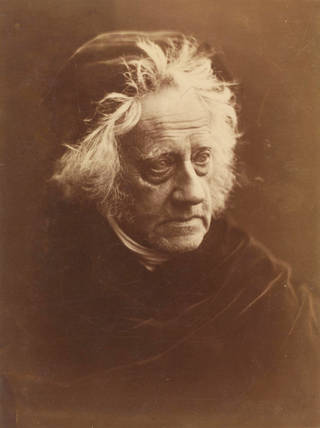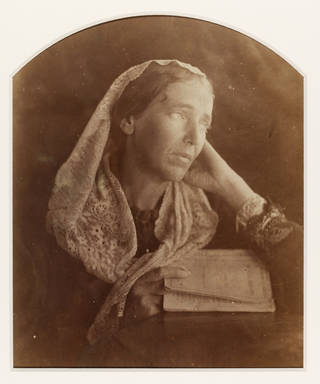My aspirations are to ennoble Photography and to secure for it the character and uses of High Art by combining the real & Ideal & sacrificing nothing of Truth by all possible devotion to poetry and beauty.
Best known for her powerful portraits, Cameron's photographs were highly innovative: intentionally out-of-focus and often including scratches, smudges and other traces of her process. In her lifetime, Cameron was criticised for her unconventional techniques, but also appreciated for the beauty of her compositions and her conviction that photography was an art form.
Julia Margaret Pattle was born in Calcutta on 11 June 1815, the fourth of seven sisters. Her father was an East India Company official and her mother descended from French aristocracy. Julia Margaret was the most flamboyant of the Pattle sisters, known for their sociability and artistic eccentricity.

Educated mainly in France, she returned to India in 1834. In 1836, while recovering from an illness in South Africa, she met the British astronomer Sir John Herschel (1792 – 1871), who was surveying the skies of the southern hemisphere. In 1842, Herschel introduced her to photography. He remained a life-long friend and correspondent on photographic matters.

During the same stay in South Africa, Julia Margaret met Charles Hay Cameron (1795 – 1880), a reformer of Indian law and education who would later invest in coffee plantations in Ceylon (now Sri Lanka). They married in Calcutta in 1838 and she became a prominent hostess in colonial society.

A decade later, the Camerons moved to England, where several of Julia Margaret's sisters already lived, and had established literary, artistic and social connections. By then they had four children, two more were born in England. Staying first in Tunbridge Wells, Kent, before moving to East Sheen and Putney in London, in 1860 the Camerons settled in Freshwater, on the Isle of Wight, where Julia Margaret would later begin making photographs.

Julia Margaret began her photographic career at the age of 48 when she received her first camera as a gift from her daughter. She quickly and energetically devoted herself to the art of photography. Within two years Cameron had sold and given her photographs to the South Kensington Museum (now the V&A), which in 1868 granted her the use of two rooms as a portrait studio, effectively making her our first artist-in-residence.

The Camerons lived on the Isle of Wight until 1875, when they moved to Ceylon to be near four of their sons and the family's coffee plantations. Cameron's photographic production slowed considerably after the move – the botanical painter Marianne North was the only European to sit for her in Ceylon. Cameron died in Ceylon in 1879.
Our collection of Cameron's prints is representative of her wide range of subject matter as well as the forward-looking and experimental nature of her working process.
Discover more about Julia Margaret Cameron.

